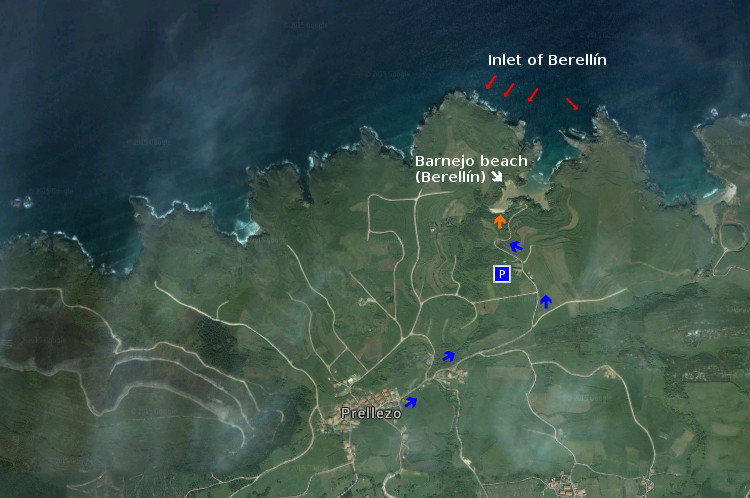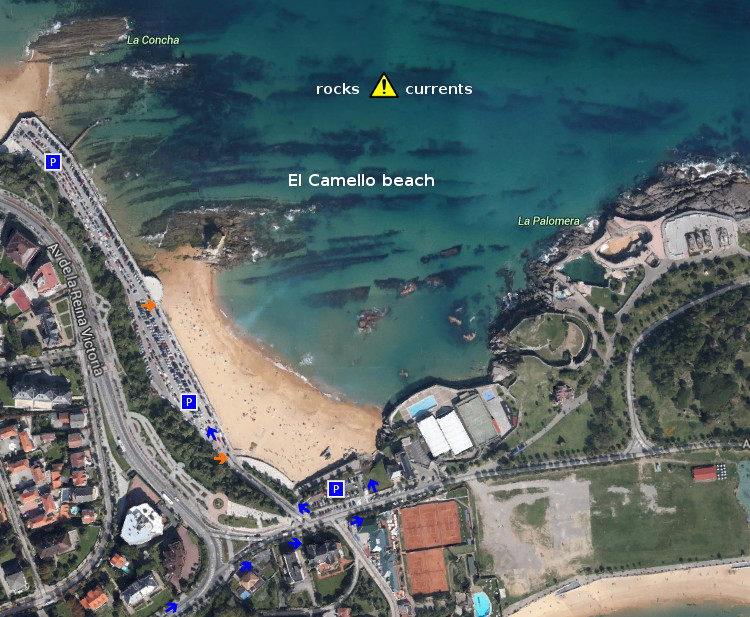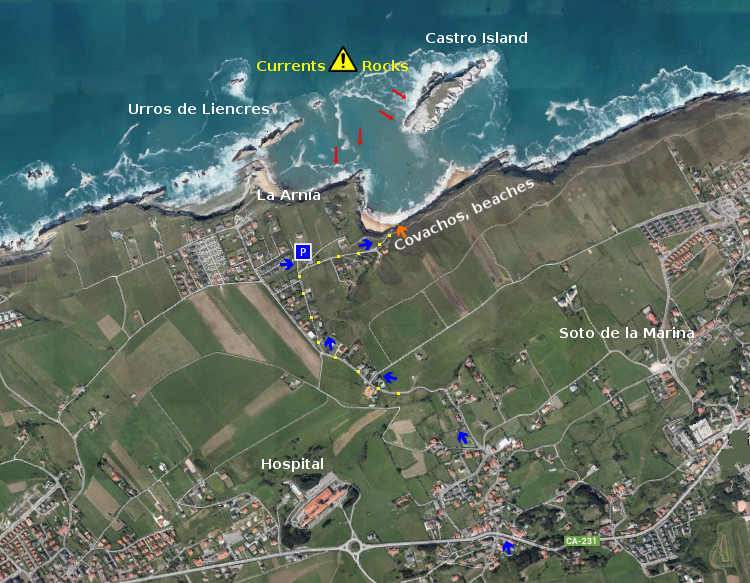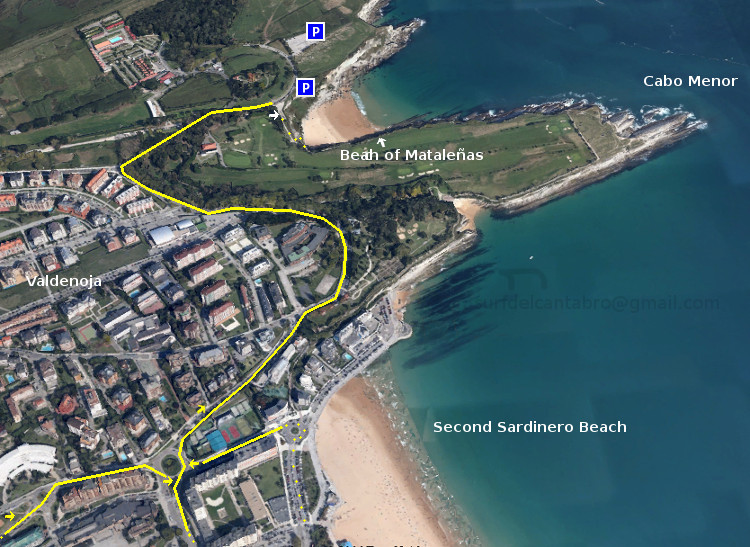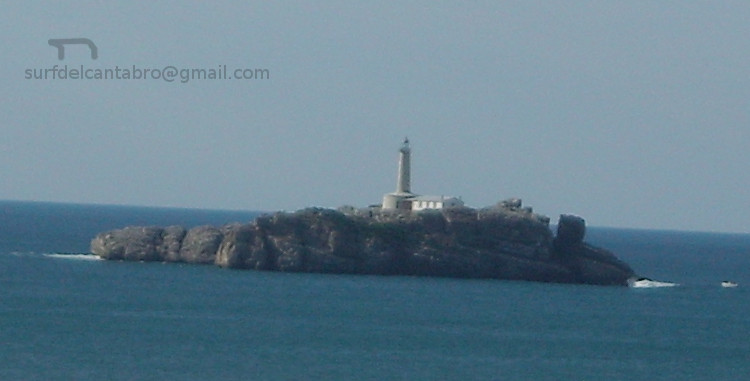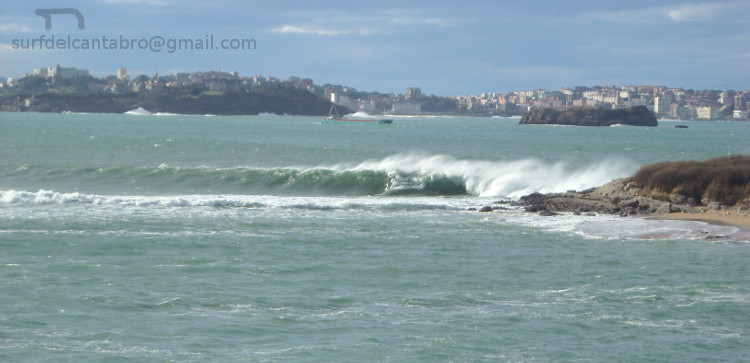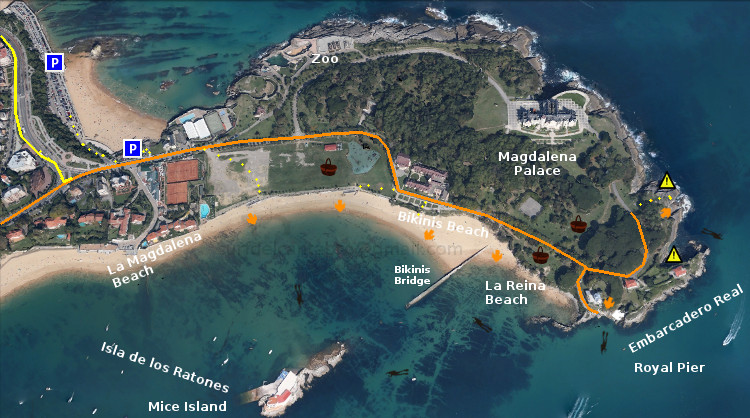 La Maruca está ubicada en la localidad de Monte, perteneciente al municipio de Santander. Es la Maruca un puerto natural emplazado en la costa norte de la ciudad y blasonada por la orografia del litoral que esculpe el Mar Cantábrico.
La Maruca está ubicada en la localidad de Monte, perteneciente al municipio de Santander. Es la Maruca un puerto natural emplazado en la costa norte de la ciudad y blasonada por la orografia del litoral que esculpe el Mar Cantábrico.
Su paseo marítimo cuenta con un amplío parking desde donde comenzar la ruta. Una vez situados en ese punto, podemos contemplar la belleza de este puerto. Pequeñas barcas de pescadores se agolpan hacia el interior y el lado izquierdo del mismo. Allí desemboca la Ría de San Pedro, contribuyendo a modelar la singular forma de La Maruca. Al alcance de nuestra vista se eleva una estatua gigante de un pescador, homenaje a la gente del mar. En el lado derecho del paseo marítimo se puede visitar el Centro de Interpretación del Litoral, pequeño museo dedicado al mar y la costa de Cantabria.
Continuando el camino, a la otra parte del CIL, aparece la Playa de Rosamunda. Es pequeña y sólo hábil en marea baja. Su principal uso esta destinado a la pesca recreativa desde sus rocas. Los días en los que la mar esta plana es posible realizar submarinismo. Doradas, perlas, salmonetes, y jargos son algunas de las espcecies de peces que podemos encontrar. Su fondo rocoso e irregular se entremezcla con la arena que el oleaje deposita en la base de esta zona. Un momento de pausa en este lugar hace que los límites de La Maruca varíen y difuminen sus fronteras entre el azul del cielo nuboso y el azul oscuro del mar.
Ahora el sendero transcurre paralelo al acantilado, marcado en el suelo por el uso. El oleaje al encuentro con las rocas dispara el agua, haciendo que la espuma se suspenda en el aire. Las pequeñas gotas de agua y el olor puro del mar acompañan la travesía. En el otro extremo, y después de atravesar este escenario, la arena abundante en una esquina nos hace intuir la entrada natural y más cómoda a la playa.
Llegamos a un pequeño cabo dentro de este entorno. Entre los muros de las fincas particulares y el mar, se encuentra la roca por la que caminamos. Va perdiendo gradualmente su altura hasta finalizar a nivel del mar. La última parte del tramo es un acantilado a cuyo resguardo llegan las olas que entran en la Playa del Bocal. Su irregular fondo de roca, afilada por las olas, aumenta el disfrute de esta imagen contemplada desde tierra firme. Nacen , en la distancia cercana, unas olas características. Su tamaño medio y su definido recorrido estimulan la imaginación. Cuando las olas crecen de tamaño, succionan con mayor fuerza el fondo, dejando entrever a poca distancia de la superficie del agua, el fondo rocoso. A nuestra espalda, una base el Instituto Español de Oceanografía.
Al final de este tramo asoma la entrada a la Playa del Bocal. Avanza el sendero irregularmente hasta llegar a campo abierto. Las vacas pastan libres en este lugar. Una valla electrificada las separa de los caminantes. Paso a paso subimos una pequeña y suave colina formada por vegetación y roca kárstica. Desde ella divisaremos la última cala del trayecto, aquella donde se origina y habita una de las olas más grandes de Cantabria: La Vaca Gigante.
La Maruca to La Vaca. Trekking route
 La Maruca is located in the town of Monte, belonging to the municipality of Santander. It is a natural harbor located on the north coast of the city and blazon by the orography of the coastline that sculpts the Cantabrian Sea.
La Maruca is located in the town of Monte, belonging to the municipality of Santander. It is a natural harbor located on the north coast of the city and blazon by the orography of the coastline that sculpts the Cantabrian Sea.
Its promenade has a large car park from where to begin the route. In that point, we can contemplate the beauty of the port. Small fishing boats are crowded toward the inside and the left-hand side of the same. That place is The Stuary of San Pedro, helping to shape the unique configuration of La Maruca. In the scope of the view is raised a giant statue of a fisherman, a tribute to the people of the sea. On the right side of the promenade you can visit the Interpretation Center of the Coastline, small museum dedicated to the sea and the coast of Cantabria.
Continuing along the path, to the other part of the CYL, appears the Beach of Rosamunda. It is small and only available at low tide. Its main use is intended for the recreational fishing from the rocks. The days on which the sea is flat it is possible to make scuba diving. Gold, pearls, red mullet, and jargos are some of the espcecies of fish that we can find. Its rocky bottom and irregular is intermingled with the sand that the waves deposited in the base of the zone. A moment of pause in this place makes the limits of La Maruca may vary, and blur their boundaries because of the blue of the sky , the clouds and the dark blue of the sea.
Now the path runs parallel to the cliff face, marked on the ground by use. The waves to the encounter with the rocks shoot the water, making that the foam is suspended in the air. The small drops of water and the fresh sea smell accompany the voyage. On the other end, and after crossing this scenario, the sand in a abundant corner makes us sense the natural and more convenient entrance to the beach.
We arrived in a small cape within this environment. Between the walls of the private farms and the sea, is the rock through which we walked. It gradually lose their height up to finish at sea level. The last part of the zone is a cliff which guards the arrival of the waves that fall on the Beach of El Bocal. Its irregular rocky sea bottom, sharpened by the waves, increases the enjoyment of this image when we see it from the mainland. Some particular waves appear in the close distance. Its medium size and its defined path stimulate the imagination. When the waves grow in size, the sea sucks with greater force the fund, showing the rocky bottom near the surface of the water. To our backs, a basis of the Spanish Institute of Oceanography.
At the end of this stretch is the entrance to the beach El Bocal. The trail moves irregularly until you get to open field. The cows graze free in this place. An electric fence separates the hikers from the animals. Step by step we climb a small and soft hill, formed by vegetation and karstic rock. There we will see the last cove of the journey, where borns and inhabits one of the biggest waves in Cantabria: «La Vaca Gigante».
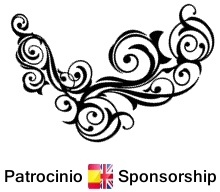
![]() La playa de Barnejo, o playa de Berellín, está situada en el pueblo de Prellezo. Es una idílica playa de singular belleza. Tiene un único acceso, a través de la carretera que uno el centro del pueblo con la playa. Cuenta con un pequeño aparcamiento, situado a 100 metros del arenal. Las características de Barnejo la convierten en un lugar ideal para practicar submarinismo, además del baño y el ocio.
La playa de Barnejo, o playa de Berellín, está situada en el pueblo de Prellezo. Es una idílica playa de singular belleza. Tiene un único acceso, a través de la carretera que uno el centro del pueblo con la playa. Cuenta con un pequeño aparcamiento, situado a 100 metros del arenal. Las características de Barnejo la convierten en un lugar ideal para practicar submarinismo, además del baño y el ocio.![]() The beach of Barnejo , or beach of Berellín, is placed in the town of Prellezo. It is an idyllic beach of singular beauty. It has an only access, across the road that connects the center of the village with the beach. It possesses an small parking, placed to 100 meters of the sandbank. Its characteristics turn Barnejo into an ideal place to practise scuba diving , besides the swimming and the leisure.
The beach of Barnejo , or beach of Berellín, is placed in the town of Prellezo. It is an idyllic beach of singular beauty. It has an only access, across the road that connects the center of the village with the beach. It possesses an small parking, placed to 100 meters of the sandbank. Its characteristics turn Barnejo into an ideal place to practise scuba diving , besides the swimming and the leisure. Acceso/Beach Access
Acceso/Beach Access